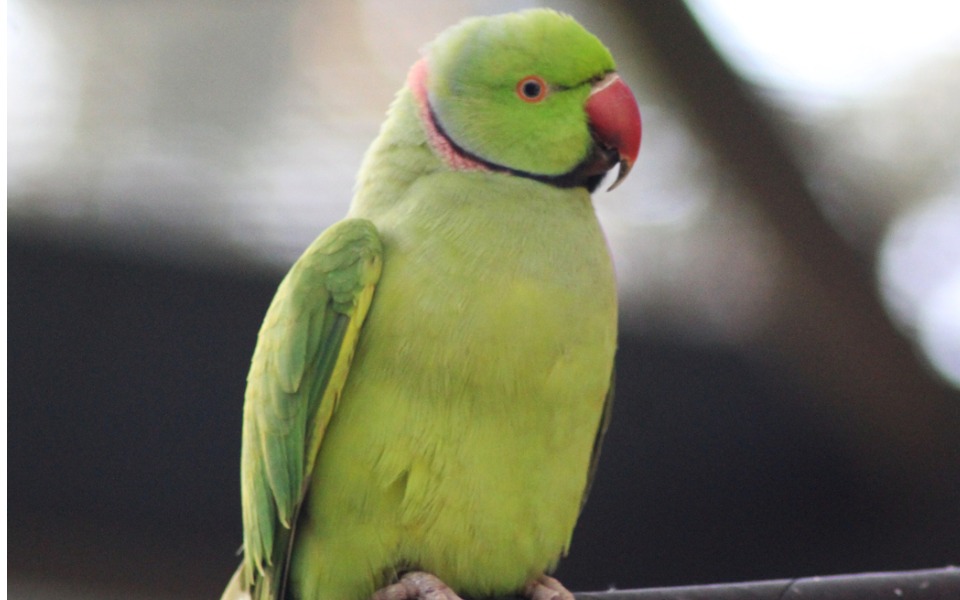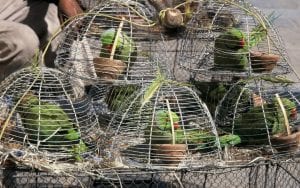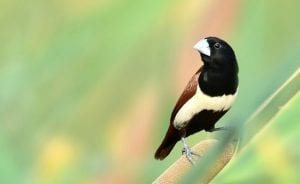
Demand for parrots as pets on the rise, species in peril
The demand to keep parrots as pets have gone up in metro cities like Kolkata, Chennai, and Bengaluru, resulting in illegal trading of the birds in many other parts of the country, says bird enthusiasts.

The demand to keep parrots as pets have gone up in metro cities like Kolkata, Chennai, and Bengaluru, resulting in illegal trading of the birds in many other parts of the country, says bird enthusiasts.
In a two day ‘6th Tamil Birders Meet’ organised by birders across Tamil Nadu, D Avinandan, India Representative, World Parrot Trust, said that 174 parrot species out of 400 are now classified as ‘near threatened’ due to booming wild bird trade.
“Among the ‘Bird Orders’ which have more than 100 species, parrots (Psittaciformes) are the most threatened. India’s growing higher middle class and elites have created huge demand for exotic parrots from Africa, South East Asia and America contributing to the decline of parrot species in those regions” he said.
According to Avinandan, most people are buying parrots because of their colour and ability of vocal learning.

“These two factors have become a curse for the parrots. Both native and exotic parrot species are being traded in tens and thousands, kept in small, unhygienic enclosures across the country” he added.
Since Parrots have a lifespan of more than 60 years, petting them is not the only issue bird enthusiasts warn about. Freeing the birds once their owners decide to give the pet up is another topic that needs awareness about.
“After keeping in a cage for two-three years, when the owner decides to free the birds in the wild they putting at risk both – the birds which are already existing in the wild and the pet bird. There are chances that the feral (once captive and now turned into wild) bird can spread diseases like PBFD (Psittacine Beak and Feather Disease), avian malaria to the other bird species. Also, the feral bird can become a pest in some other region by destroying the native bird species of those regions” said Avinandan.
Ornithologists advise that before freeing the caged birds into the wild, they should be given proper rehabilitation for a certain period. Only native species should be rehabilitated and released.
Also read: Why do humans want animals to be like them?
They also discourage sympathy release of caged birds particularly the exotic species for ethical and ecological reasons.
Wildlife authorities warn against poaching of the birds which is resulting adversely in the environment.

Tricoloured Munia which is a South Indian bird has established unnatural populations in North India due to illegal trading. Likewise, the Moustache Parakeet has displaced the Long-tailed Parakeet, the native parrot species of Singapore and the latter’s number has been drastically gone down.
The demand also affects the price of the birds. Some native Indian Parrot species can be sold up to ₹15,000 illegally and Grey Parrot can be sold anywhere between ₹40,000 to ₹60,000 and some Macaws can be sold for ₹1 lakh.
The only way to protect the parrot species is to regulate the wild bird trade and ban the trade in some species, Avinandan says.
Also read: Researcher tells childhood tales through comics to save hedgehogs
As of now, channelising the existing pet keepers into conservation education and awareness programs can be helpful in controlling the caged birds turning into feral birds. However, he is cautious about forcible confiscating of the caged birds, especially those bonded to their human caretakers.
“It brings pain and misery both to pet owners and the birds, which are tamed,” he said.


